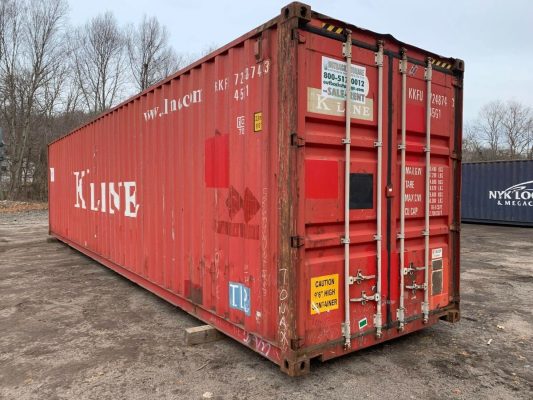How to Maintain and Care for Your Shipping Container Structure

Shipping containers have become a popular choice for various applications, from storage units to homes and offices. Their durability and versatility make them an excellent investment, but maintaining and caring for these structures is crucial to ensure their longevity and functionality. Here are some essential tips for maintaining and caring for your shipping container structure.
1. Regular Inspections
Routine inspections are the first step in maintaining your shipping container. Schedule inspections at least twice a year, looking for signs of wear and tear, rust, or any structural issues. Pay close attention to the following areas:
- Exterior Walls: Look for rust, dents, and signs of corrosion. If you spot rust, address it immediately by sanding the affected area and applying a rust-inhibiting primer and paint.
- Seals and Gaskets: Check the seals around doors and vents. Replace any damaged or worn seals to prevent water leaks and pest infestations.
- Flooring: Inspect the container’s flooring for signs of rot or damage. If you notice any soft spots or mold, consider replacing the damaged sections.
2. Clean Regularly
Maintaining a clean shipping container is essential for its longevity. Regular cleaning helps prevent rust and mold buildup. Here are some cleaning tips:
- Exterior Cleaning: Use a pressure washer or a mixture of soap and water to clean the exterior. This helps remove dirt, grime, and any potential corrosive substances like salt or chemicals.
- Interior Cleaning: For storage containers, clear out debris and dust regularly. Use a vacuum or broom and a damp cloth to wipe down surfaces. Consider using disinfectants if the container is used for food storage or as a living space.
3. Address Rust Immediately
Rust can be one of the most significant threats to your shipping container’s structural integrity. To address rust effectively:
- Prevention: Apply a rust-inhibiting paint to the exterior to create a protective barrier against moisture and corrosion.
- Treatment: If rust spots do appear, sand them down to the bare metal and apply a rust converter or primer before repainting.
4. Proper Ventilation
Proper ventilation is crucial to prevent moisture buildup inside the container, which can lead to mold and mildew. Here are some ventilation tips:
- Ventilation Panels: Install ventilation panels or passive vents to allow air circulation. This is especially important if the container is used as a living space or for storage.
- Dehumidifiers: Consider using a dehumidifier if humidity levels are high, particularly in coastal areas where moisture is prevalent.
5. Insulation and Temperature Control
If you’re using your shipping container for living or working, insulation is essential for temperature control. Insulation not only helps maintain a comfortable temperature but also reduces condensation, which can lead to rust. Here are some options:
- Insulation Materials: Use spray foam, rigid foam boards, or insulated panels to insulate the walls and roof.
- Cooling and Heating: Install appropriate heating or cooling systems to regulate the temperature inside the container, ensuring a comfortable environment year-round.
6. Pest Control
Pests can be a significant issue for shipping containers, especially if they are stored in a location near vegetation. Here are some steps to keep pests at bay:
- Sealing Entry Points: Ensure all entry points, including doors and vents, are sealed properly. Use weather stripping or caulk to close any gaps.
- Regular Checks: Conduct regular pest inspections, looking for signs of infestation like droppings or nests. If pests are found, take appropriate measures to eliminate them, such as traps or hiring a pest control professional.
7. Landscaping and Drainage
If your shipping container is placed outdoors, consider the landscaping and drainage around it. Proper drainage can prevent water from pooling around the base, which could lead to rust and structural issues. Here are some landscaping tips:
- Elevate the Container: Ensure the container is elevated off the ground to allow water to flow underneath. You can use concrete blocks or a gravel bed for this purpose.
- Grading: Grade the surrounding land to promote water runoff away from the container.
8. Secure the Structure
If your shipping container is used for storage or as a workspace, securing it is vital to prevent theft or vandalism. Consider these security measures:
- Locks: Install high-quality locks on doors to deter unauthorized access.
- Surveillance: Consider adding surveillance cameras or motion-activated lights to enhance security.
Conclusion
Maintaining and caring for your shipping container structure is crucial for its longevity and usability. By regularly inspecting, cleaning, and addressing issues like rust and pests, you can ensure that your investment remains in excellent condition. Whether you’re using your container for storage, a home, or an office, these maintenance tips will help you enjoy its benefits for years to come. Proper care not only protects your container but also enhances its value and functionality, making it a reliable solution for your needs.

